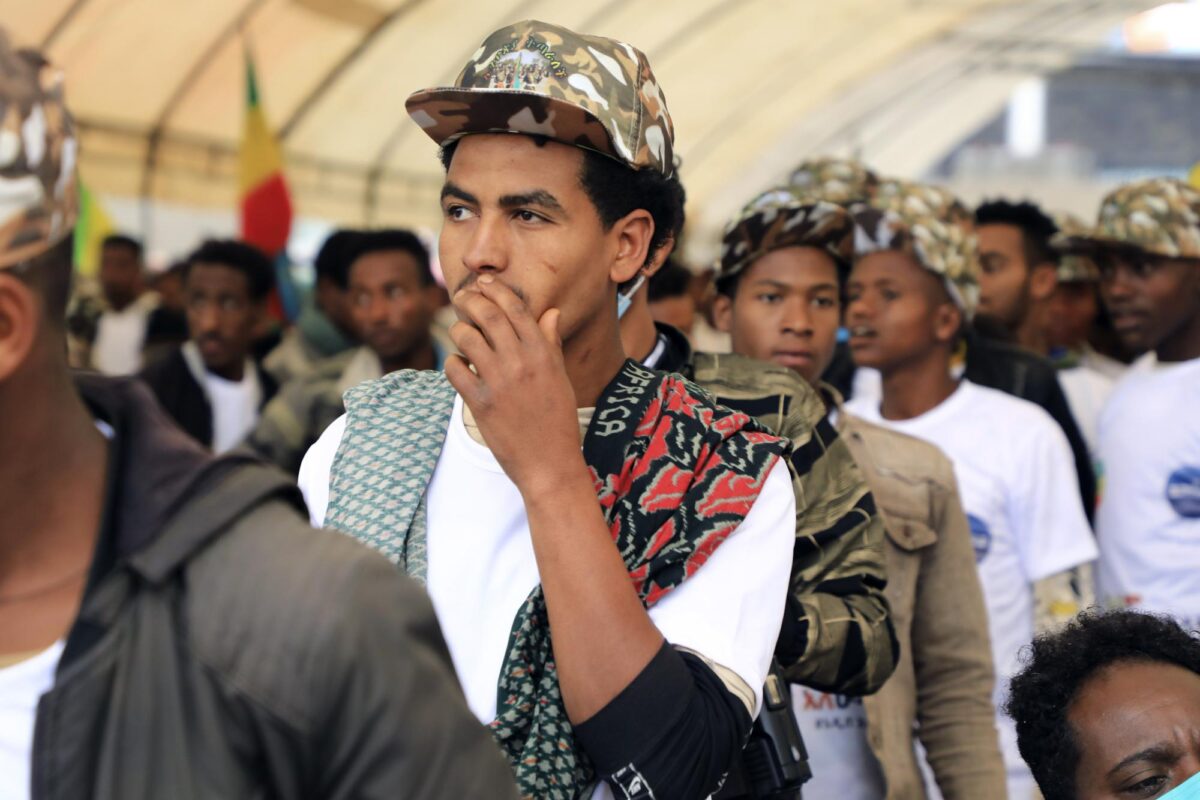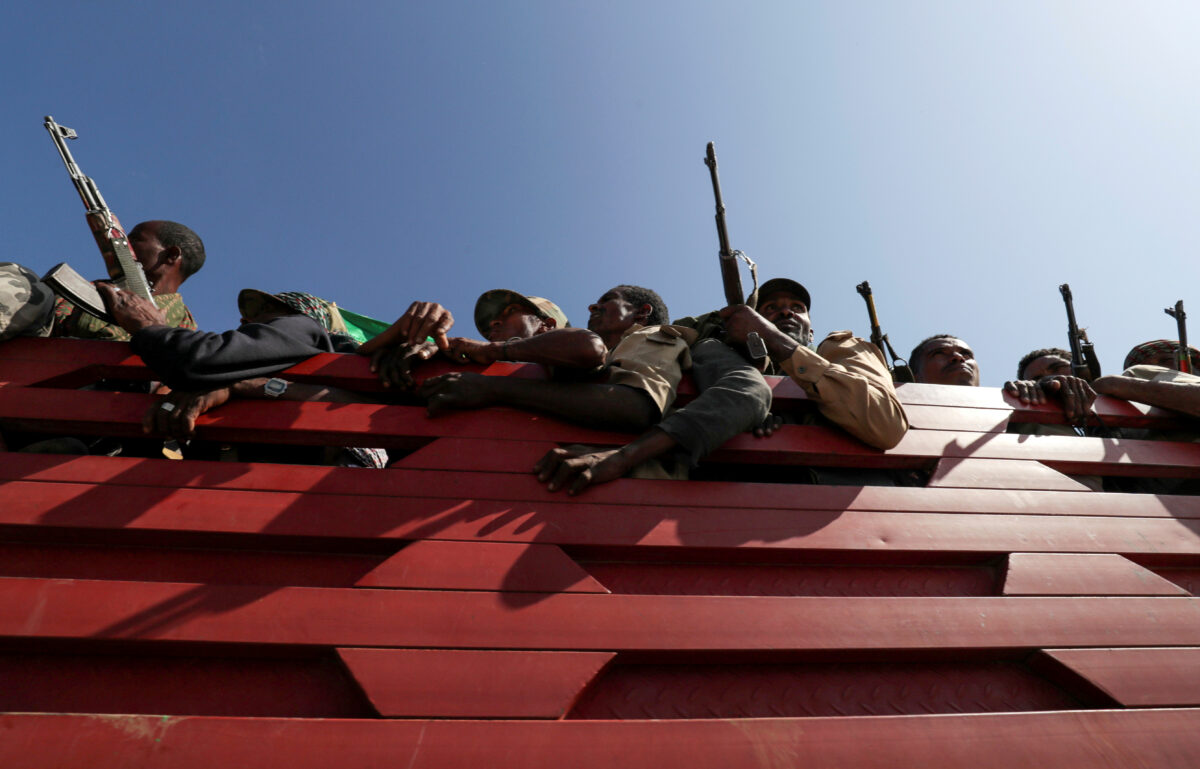
The War Is Over; Long Live the War?
Vaccination
EthiopiaDespite a peace deal between the two warring powers, the civil war – currently the world’s worst conflict in terms of casualties and refugees – is far from over.
tigre The Popular Liberation Front (TPLF) almost certainly secretes large quantities of weapons in caches around the Tigray region, as it has done in the past, and once its cadres have gained strength Almost certainly the guerilla fighting of secession would resume. At the same time, the Marxist Oromo separatist movement – which traces its origins to the 1960s – continues to wage its own genocidal (by definition) war against Ethiopia.
Significant deaths of Ethiopians, especially Amhara people, at the hands of the Oromo Liberation Front (OLF) and its affiliated militias continue almost daily.
An “agreement for lasting peace through a permanent cessation of hostilities” brokered by the African Union (AU) and mediated by former Nigerian President Olusegun Obasanjo in Pretoria, South Africa, was described by UN Secretary-General Antonio Guterres on 2 November. went. promising start. It was just that: a “promising start.”
This is by no means the end of a complex web of conflict that has challenged Ethiopia’s unity for many years.
The UN Secretary-General described the Pretoria Agreement between the Ethiopian government and the TPLF as an agreement between the government and “Tigray”. The reality was far away from this. It was an agreement between the government and the TPLF, a radical Marxist military organization that did not represent the population of the Tigray region, one of the many victims of the TPLF in recent years.
Furthermore, while international observers noted that the agreement did not include the government of neighboring Eritrea – which had provided military aid to the Ethiopian government – none noted that the agreement included the OLF, the TPLF’s main military ally. have failed.
The OLF and its forces continue to wage an all-out war against the Ethiopian government, especially against the Amhara population and all Ethiopians who support “Ethiopian” unity or the Ethiopian Orthodox Tewahedo Church.
Most reporting indicated that the Pretoria Agreement ended “two years of fighting”, but the TPLF’s separatist war had lasted longer than that. The TPLF’s resumption of its war against Ethiopia may have killed as many as 500,000 people in the past two years.
The TPLF was a hardline Marxist military force fighting for the secession of the Tigray region from Ethiopia during the long period that another hardline Marxist government—Dergu—controlled Ethiopia after a 1974 coup against Emperor Haile Selassie I. The sponsor, the Union of Soviet Socialist Republics (USSR), collapsed in 1990–91. At that point, the TPLF force found itself in Addis Ababa, the capital of Ethiopia, with two battalions of Sudanese armour. Dergu leader Mengistu Haile Mariam fled to Zimbabwe on May 21, 1991. He is still there.

The United States, already by the time of the collapse of the USSR, sent Herman Jay (“Hank”) Cohen, its Assistant Secretary of State for Africa, to Addis. They essentially told the TPLF that the separatist group was now in charge of the entire Ethiopian Empire, which they demanded it leave. The TPLF, which represented a small minority of the Tigrian population (itself then only 6 percent of the entire Ethiopian population), found it needed to come together to control a single government for all of Ethiopia, which it did on 27 May. , did on 1991. Its first act was to agree on Eritrea’s secession from Ethiopia, which eventually resulted in Eritrea’s declaration of independence on May 24, 1993.
TPLF was able to control Ethiopia until 2018. It was lucky it lasted so long. Its wartime leader, Meles Zenawi, used extreme measures to ensure control of the government, but he died in 2012 and the TPLF floundered thereafter. By 2018, it had lost direction and drifted away from governance, handing over power to then-deputy prime minister Helimariam Desalegn, from the Wolayta ethnic group of southern Ethiopia, who was named interim prime minister on August 21, 2012.
He was from a minority ethnic group and, for most Ethiopians, represented a breakaway from the TPLF, but lacked a power base. On 2 April 2018, Prime Minister Dr. resigned, paving the way for an Oromo-dominated government led by Abiy Ahmed Ali to assume control. Abiy reorganized the governing Ethiopian People’s Revolutionary Democratic Front (EPRDF) into a more representative national party, the Prosperity Party, on 1 December 2019.
The main difference between the EPRDF and the Prosperity Party, apart from not being explicitly “revolutionary”, was that the TPLF had evaporated from the coalition. The TPLF had, in effect, “gone back to the bush.” It was only later that the TPLF leadership after Meles decided that they wanted to return to power in Ethiopia or somehow achieve a separate Tigrean nation-state.
TPLF supported the US Joe Biden administration in its reawakening agenda. Many of the Biden national security officials had previously served in the Bill Clinton and Barack Obama administrations and had built a strong working relationship with TPLF leaders during the Obama administration. The United States then sought the use of Ethiopian airspace at Arba Minch in southern Ethiopia as a base for several General Atomics MQ-9 Reaper unmanned combat aerial vehicles (UCAVs) from 2011 to September 2015. Reapers were used for intelligence and assault. mission in neighboring Somalia.

For this, the United States paid heavily. The Obama administration paid the TPLF with cash, and training and weapons for the TPLF militia. Thanks to these resources, the TPLF later, when it was out of office, to increase its offensive against the Ethiopian government. The irony was that the Biden administration—which included many of the same officials as the Obama administration—continued to support the now-outlawed TPLF against the Ethiopian government. And those officials worked hard to persuade US allies in Europe to similarly support Marxist rebels against the pro-Western Abiy government.
This enabled the TPLF to garner international support and fight for far longer than would otherwise have been possible.
However, the 2020–22 fighting saw the TPLF widely eclipsed by government forces, mainly when they were replaced by Turkish-supplied Bayraktar TB-2 UCAVs and other less effective UAE-, Russian- and Iranian-supplied were able to use the UCAV. , The soft-skinned, vehicle-borne fringes of the TPLF in the Amhara and Afar regions soon found that they had an adversary they could not defeat, and they once again concentrated in the Tigray region, mainly around the Tigray capital Mekele. started retreating.
What was significant about the revived insurgency of the TPLF was that it had a huge stockpile of arms and cash supplied by the US. To this was added a large supply of trucks, which the US State Department insisted that the Ethiopian government should provide humanitarian aid to the besieged Tigray population.
The aid, in fact, went to TPLF, which also kept the trucks provided to transport the aid. These they used to rotate their lightning strikes in the Amhara and Afar territories.

Just as the Dergu collapsed when its sponsor, the USSR, collapsed, the TPLF initially collapsed when the Obama administration left office. Its brief resurgence in 2021, backed by sympathetic old friends in the Biden administration, collapsed when US allies gradually withdrew support for a policy that would have left them without influence over the vital trade route to Ethiopia and the Red Sea .
Fast forward to October 2022: several senior TPLF “generals” were discreetly observed leaving the battlefield in Tigray and moving to South Africa. At first, it was thought that they were seeking asylum as the war had gone badly for the TPLF. Instead, it was to give importance to the negotiations in Pretoria, which would require the combatants to agree to surrender to the TPLF. The Compromise of 2 November was the result.
This was quickly followed on 12 November by another agreement, signed in Nairobi, Kenya, clarifying the terms of the peace accord’s implementation. Complete disarmament of TPLF forces was to begin on 15 November and be completed within a month. “The disarmament of heavy weapons will be accompanied by the withdrawal of foreign and non-ENDF (Ethiopian National Defense Forces) forces from the region,” the announcement said.
Lieutenant General. Commander-in-Chief of the TPLF militia Tadesse Wrede Tesfaye—which had styled itself as the “Tigre Defense Forces”—took part in the Nairobi Agreement with ENDF Chief of General Staff Field Marshal Birhanu Jula. There was general agreement that disarmament would actually begin when it was assured that troops from neighboring Eritrea had left the Tigray region. The Nairobi document was titled “Declaration of the Senior Commanders on Modalities for the Implementation of the Agreement for a Permanent Peace through the Permanent Cessation of Hostilities,” and it referred to Eritrea not by name but as “foreign forces”. .
It was expected that difficulties in convincing the TPLF that Eritrean forces had left the battlefield could be used as a reason to delay disarmament compliance. It was also expected that the TPLF had already begun stockpiling weapons in the mountains of Tigray to guarantee future options.
Kindeya Gebrehiwot, head of the Tigray foreign affairs office, said on 12 November that Eritrean troops were still “killing, kidnapping and shelling” areas in Tigray such as Shire and Adi Diro. This may be so, although TPLF information handling has been consistently misleading.
A team of monitors probing the violations was to begin work by 22 November. It will include representatives from the government of Ethiopia, the TPLF, the African Union and the Intergovernmental Authority on Development (IGAD).
It was expected that once “normalization” was achieved, Tigrian fighters could be re-welcomed into the ENDF. During the last two years, the Abiy government was forced to purge most of the defense force officers who were Tigrins or owed their posts to the TPLF. This was followed by a series of sabotage of government functions by Tigrinyan or pro-TPLF officers who remained in the ENDF. Only after that purge did the ENDF begin to win comprehensively on the battlefield.
Winning the trust of the Tigrian population would be more difficult and time consuming. Tigrian citizens were afflicted by the reality that the TPLF had virtually taken them hostage, with the TPLF accepting the government’s war as a war against the Tigrian people.
But for the Amhara and Afar populations, in particular, it was likely to be equally difficult to rebuild trust in the Abiy government, given that they felt abandoned by the predominance of TPLF and OLF forces during recent years. Abiy will need to confirm that his Oromo links will not overwhelm his pan-Ethiopian promises.
The views expressed in this article are the views of the author and do not necessarily reflect the views of The Epoch Times.
